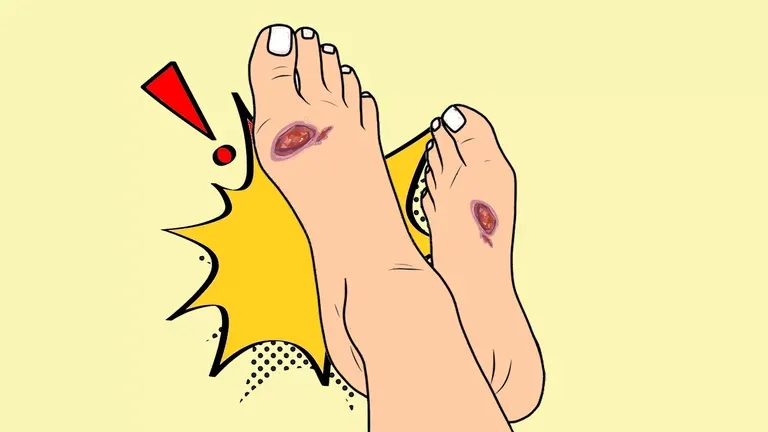People with diabetes have more risk of having feet problems.In fact, up to 34% can develop foot ulcers, according to data from the Illustrious Official College of Podiatrists of the Community of Madrid (Copoma).
But not only that: it is estimated that the amputation rate by diabetic foot is more than 15 times higher than that of the general population.This could be avoided by controlling the disease and giving special care to the feet.
What is the diabetic foot?
The diabetic foot is another consequence of diabetes when it is not well controlled, and even being well controlled there may be some degree of incidence.And it is that high glucose levels in blood cause:
An affectation of the nerves of the legs and feet (neuropathy), so that the person loses sensitivity in this area.
A decrease in blood irrigation of legs and feet (vasculopathy).
Related article
Both situations (the lack of sensitivity and poor circulation) can cause what begins with a simple wound in the foot becoming an ulcer with dire consequences.
People with diabetes must take care of their feet
This occurs because, as Dr. Pedro Villalta, president of the Illustrious Official College of Podiatry of the Community (Icopoma), ensures, the patient "is usually overlooked that little injury in his foot because he does not notice painnor has it habit of reviewing the feet.of infection and having to amputate the finger. "
How to cure the diabetic foot?
The treatment of the diabetic foot depends on the scope of the lesion and may include:
- Wound cleaning.
- Liquid drainage or ulcer pus.
- Extraction of the dead or infected tissue.
- Apply specific bandages and creams to absorb excess fluid and protect the wound.
- Use of a wheelchair or crutches to download the weight of the affected foot.
- Oral or intravenous antibiotics to control and eliminate infection.
- Sometimes, amputation is necessary to prevent the infection from extending to other parts of the body.
How to prevent diabetic foot?
Dr. Villalta ensures that the consequences of the diabetic foot could be avoided.First, having diabetes under control with adequate medication, as well as diet and exercise.And on the other hand it is very important to be very careful with your feet.Therefore, if you have diabetes:
Check your feet daily and look for any small friction, wound, redness, change of nail color ... look good between the fingers of the feet, nails, heel ... to observe well the soles of the feetHelp yourself with a mirror.Given the minimal injury signal, go to the podiatrist to make the pertinent cure.
Wash your feet daily with warm water.Whether it is very cold and if it is very hot, it attacks the lipid skin barrier.Nor do you have your feet for more than 5 minutes to soak and avoid wearing crine or pumice stone gloves.And it dries the feet very well, especially among the fingers, so that there are no wet areas.
Hydrates your feet two or three times a day with a specific cream.Do not leave any corner without hydrating: the plant, between the fingers ... if the skin is dry it has a greater tendency to suffer cracks that are a germs gate and, consequently, infections.
Use natural tissue socks without seams and change them daily.Inadequate socks can also cause small injuries or hinder circulation, especially if they squeeze in the ankles.
Related article
Footwear must be of good quality: skin, without seaminternal, light and breathable.It is very important that you adapt very well to the foot and do not tighten.A advice is to buy it at the end of the day since the foot is more swollen, so you will not find surprises.
Avoid sandals, high heels or narrow tips as they can cause chafing.The choice of footwear is essential because it is one of the factors that most influences the appearance of possible wounds.
Check the interior of the shoes with your hand.There may be some pebble or anything else that, having little sensitivity in the foot, can go unnoticed and cause an injury.
Cut the feet in straight to the sides to prevent the sides.
Avoid walking barefoot, both at home and on the beach.The diabetic person must especially protect his feet since he has very little sensitivity in them.
And remember, even if you have no injury and control the disease, if you have diabetes you must go to the podiatrist for a deep review every 6 months.
With timely care the diabetic foot does not have to give problems, but without them the risks are very high.In fact, Dr. Villalta ensures that podiatry should be included in Social Security as part of the treatment that the diabetic patient needs in primary care.This is a claim of copoma and many other schools in podologists.




